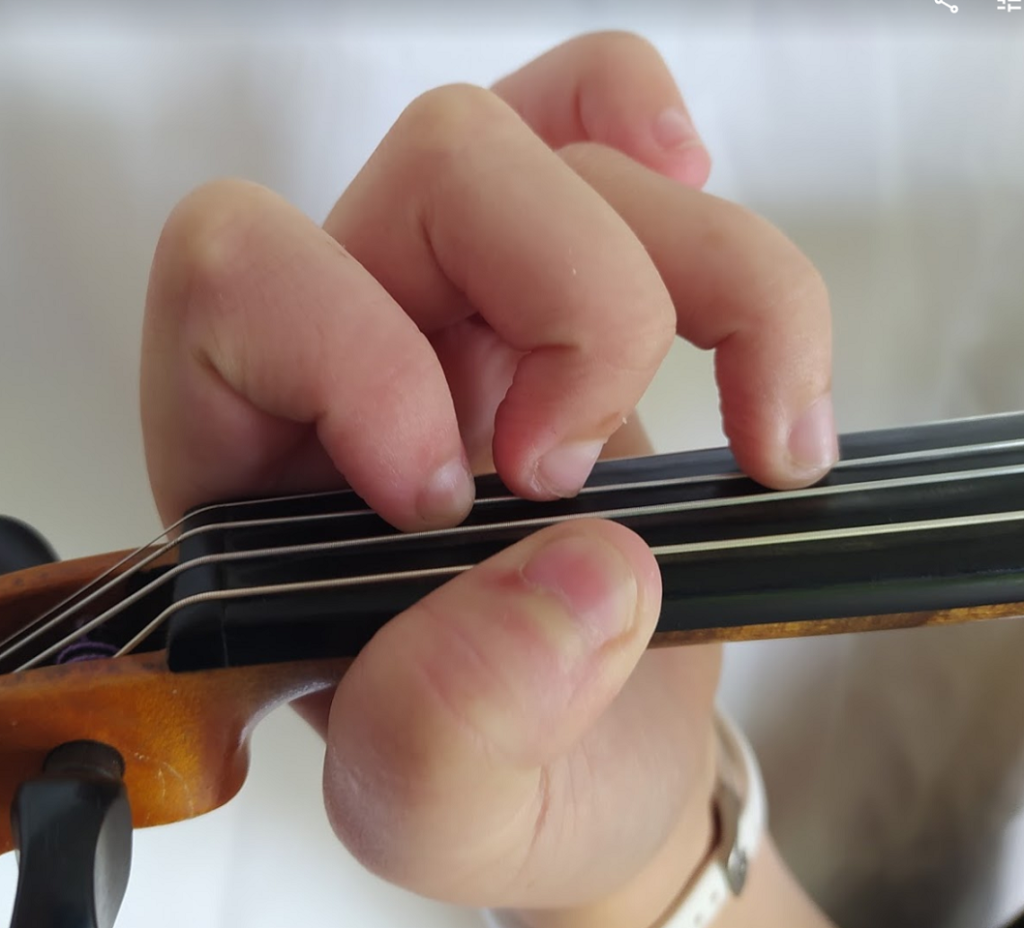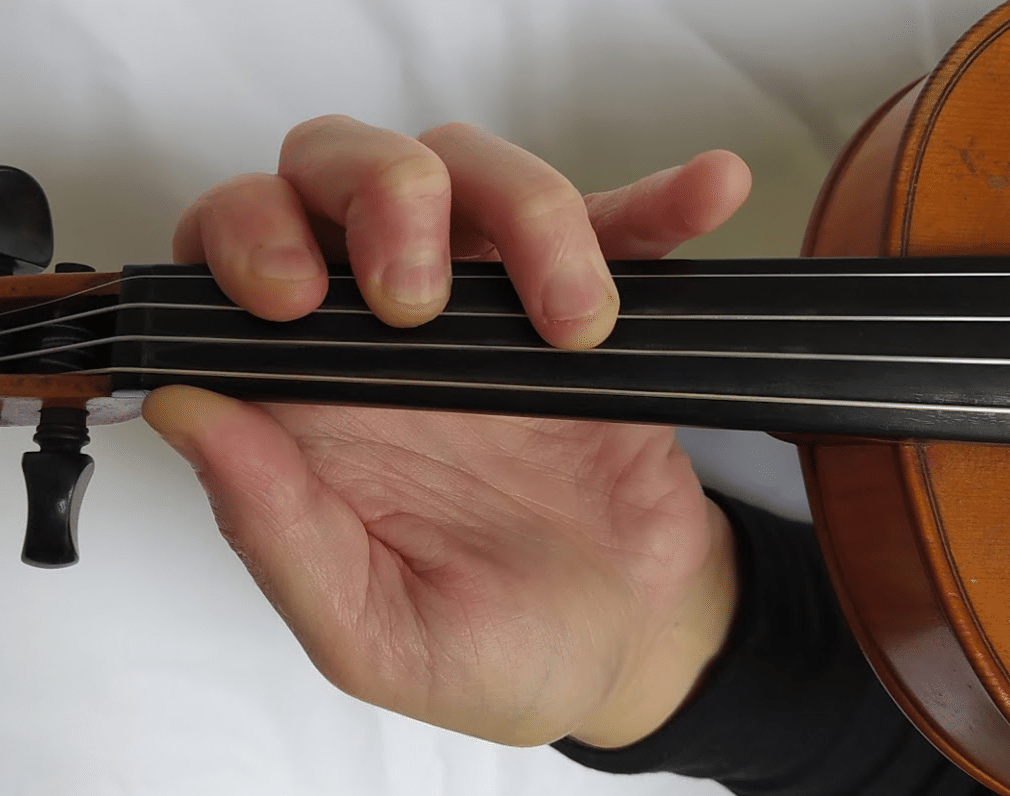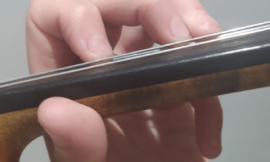Hi Guys,
Today I wanted to talk to you about spider legs. What do spiders or their legs have to do with A Melodic Minor scale? I hear you ask. Well, next time you see a spider crawling across the table, look at how he moves his legs. Each leg moves effortlessly and purposefully and that is how your left fingers need to move on the strings of your violin.
Let’s take some time to break down why A melodic minor can be so difficult; I’ll show you some of my really helpful jump back finger exercises and before you know it, your fingers will be moving quickly, accurately and really effortlessly along your strings.
The Difficulties:
Whether you’re just starting out or if you’re not sure why your A melodic minor scale isn’t as fast or accurate as you’d like it to be, it’s important that you can identify any errors in your left hand technique. Let’s look at some of the most common problems that I see when students are having trouble with A melodic minor scale.
Tension In The Left Hand And Wrist:

No matter what we’re playing, the left hand and wrist must always remain loose and flexible. I often refer to the ‘mouse hole’ between your thumb and first finger and there is no exception here; throughout the entire A melodic minor scale, we must ensure that the mouse hole does not close.
Once the left hand or wrist become tense, accuracy of finger placement is difficult leading to intonation which is approximate rather than exact. Students also become frustrated because they cannot move their fingers fast enough to play with the desired speed.
Wayward Fingers:
As you play each note of the scale, your other fingers are either in their correct positions or neatly waiting their turn above the fingerboard. Once again, there is no tension in the fingers. Sticking your ‘unused’ fingers up in the air or letting them fall beneath the neck of your violin is not ok. Not only do these errors create tension (and often discomfort), they also lead to slow changes between notes as your fingers need to ‘travel’ a greater distance to reach their required positions.
Wrist Bending Out To The Side:

This one is my pet hate!
It happens commonly as students move their fingers across to the E string from a lower string. Instead of shifting the finger position across to the E string properly, there is a tendency to just lean the wrist out to the left and lie the fingers on the E string from their position on the A or D.
This is SO incorrect. Look at how the mouse hole closes and the fingers aren’t standing up well; you can even see from the picture that my left hand and wrist are tense! This is just SO comfortable and is one of the most common causes of poor intonation, lingering pain in the left hand and wrist and the inability to move your fingers quickly. Even just taking the photos for this post has made my left hand ache!
The Tap Tap Exercises:
A (not G) melodic minor scale is usually the first of the melodics that my students learn. Not only does it allow us to address two examples of what I refer to as Jump Back Fingering, it also involves jump backs that are very achieveable for beginners. I’ve included a video here to help you work through the exercises and apply them to the complete scale. Don’t forget that the techniques addressed here can also be applied to two or three octave melodic minor scales.
The tap tap exercise is one of my favourites to get your fingers jumping back correctly for A melodic minor scale. The second finger tap is probably the easiest, so best to start with that.
- Place your first finger standing up tall on F# (on the E string)
- Now place a high second finger on G# and squash the third finger on top so that it is an A natural
- Whilst leaving your first and third fingers where they are, lift your second finger up and place it squashed on top of the first.
- Lift the second up again and place it back squashed under the third
- Repeat while maintaining a loose and relaxed hand and wrist at all times.
Repeat this with the first finger, only this time your low second finger on G natural remains in it’s place while the first repetitively lifts and jumps from F natural (low first) to F# (high first). Again, be sure to maintain the correct left hand and wrist position. Also ensure that you don’t close the mouse hole!
Playing The Top Tetrachord
The difficult part of A melodic minor scale is the finger pattern in the top tetrachord. The notes we play here include E, F#, G# and A going up and then jump back G natural, jump back F natural and E going back down. Take a good look in the video at how controlled my jump back fingering is and how purposefully my fingers are placed into their high and low positions. If you struggle with this, spend more time on the tap tap exercises. Also be sure to play the top tetrachord with a definite stop between each note; this gives you time to really pause and think about moving your fingers with purpose and acuracy.
Congratulations!

Once you’ve completed these exercises to a high standard, you can put them all together and play A melodic minor scale. Do be sure to spend sufficient time working carefully and slowly through the exercises; perhaps use a mirror to ensure that your left hand and wrist position remain relaxed and to admire how independently your left fingers start to move across the strings.
A melodic minor is more difficult than it looks but with some careful attention to basic technique, you’ll be playing with speed and accuracy in no time!
If you have any quesitons about A melodic minor scale or really anything else violin related, please do leave me a comment below and I’ll get back to you as soon as I can!
Marketa 🙂
(founder of myviolinbff.com)



Hey Marketa. This will be a really useful article (and video) for my kids. They have both been playing the violin for about 2 years and whilst they are having lessons, any and all tips will no doubt help. In truth, it kills me listening too them practice as the ears can only take so much – a father of the year in the making!!
All the best – Jason.
Thanks so much, Jason!
Yes; violin is not a nice instrument to listen to in the early stages!
But they will improve and soon enough the sound will be beautiful 🙂
Marketa,
When my daughter wakes up, I’ll have her watch this video you put in here. She’s in orchestra right now and having a tough time with some of the songs they’re having them play. Of course, all their classes are still online, so there’s no teacher there to correct them on posture, and online, it’s hard to see what all the students are doing really.
I imagine she’ll want to watch this video though. It’ll help her I think with her finger placements.
Thanks for sharing!
Katrina
Hi Katrina and thanks for your message,
It’s so hard online which is why I’ve been trying to make more videos for my students – at least they can see more clearly how to do the different techniques. I’m so glad that your daughter will benefit from this!
Have a lovely week
marketa 🙂
I have not picked up my violin in quite some time and was looking for ways to get some practice. I never did pick up the loose wrist so I am hoping to relearn but the right way this time. The “tap tap” exercises seem like a perfect way to get my fingers moving again! Thanks for the tips!
Hi Brianna and thanks for reaching out,
Please do try the exercises and let me know how you go; it’s really important to get the technique right!
Have a great day
marketa 🙂
Hi, Marketa! I love music, and I love the violin as well! I have learned to read the notes in school, but I have only played the flute, but I have always been interested in playing instruments. You do teach very well, and I think it is wonderful to teach people via YouTube how to play the violin.
The comparison with the spider legs is wonderful! They are so quick and effortless moving that I can imagine what you mean by your explanation. My fingers might break if I would try to play the violin now. They are not that mobile anymore. 😉 Excellent article! Thank you very much!
Hi Sylvia and thanks for your message,
I’m glad that you enjoyed my article and hopefully you can put it to use one day 🙂
Flute is really nice and if I had time to play another instrument, flute would definitely be my first choice
Have a nice day 🙂
I love the comparison with spiders. It’ true how effortlessly they move their legs, in absolute harmony, not once tripping. Although I do not play the violin I understand that that’s how you should play it. I actually really love the violin. I love listening to it, and I would have liked to learn it when I was younger. I guess I could still learn it, but they say that one should start at a young age. Is that true?
Hi Christine and thanks so much for your interest in my article.
You should absolutely try to learn violin if you want to! I have adult students and although it’s a bit more difficult to start later, it’s still possible and certainly you can learn to play at a standard which allows you to enjoy the music
Please do let me know if you’d like any more advice or help with anything violin related
Have a nice week 🙂
Thank for sharing exercise for a melodic minor scale.Your post is very informative and useful.
Keep up the good work!
Looking forward for your more posts.
Thanks so much, Saba! I’m glad you found this useful 😊
Hey Marketa,
I’ve just started playing the violin and wanted to learn about the melodic minor but couldn’t find a good teacher to teach me how to do it. I can really tell that you enjoy playing and teaching others about the violin and it definitely shows in your post.
A newbie like me was able to pick up and start implementing what you are teaching here. It is greatly informative and I know with practice and time I will be able to play with speed and accuracy.
Thank you
Hi Elias and thanks so much for reaching out!
I’m so glad that you think that this post will be of benefit to you. I’m about to make one about B flat melodic which will follow on really nicely from this one. Have a great week and please do let me know if you have any questions
marketa 🙂
Really helpful exercises for playing A melodic minor scale. I have great respect for the dedication, determination and discipline for anyone learning an instrument such as the violin or wanting to improve or perfect.
Hi Martine!
Thanks for your feedback. It is really difficult to play an instrument properly and I think violin is certainly right up there in terms of technical difficulty.
Have a great week and please do let me know if you have any questions 🙂